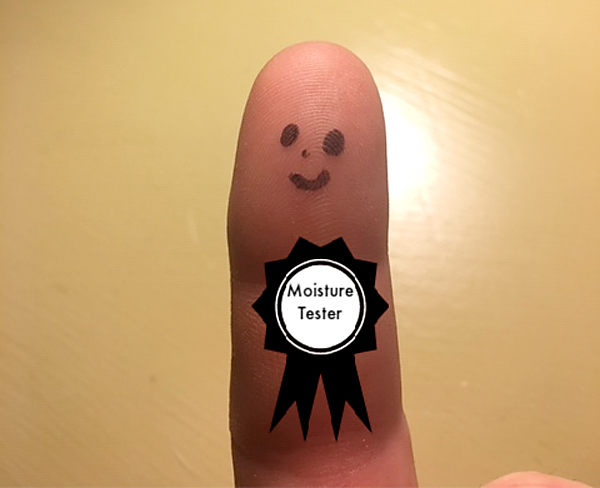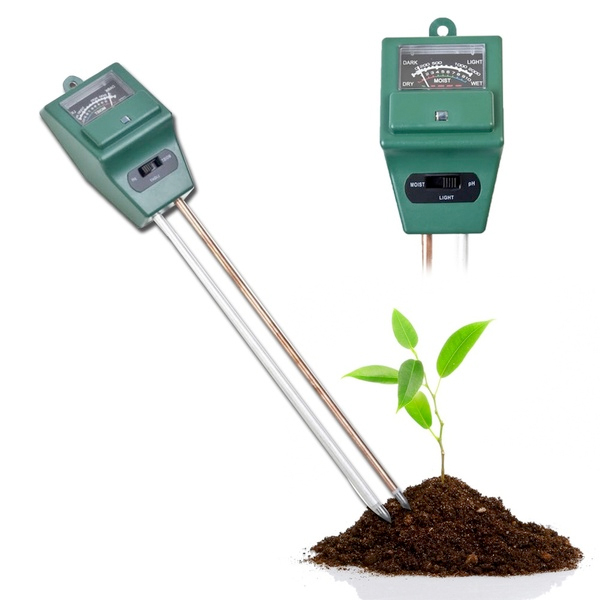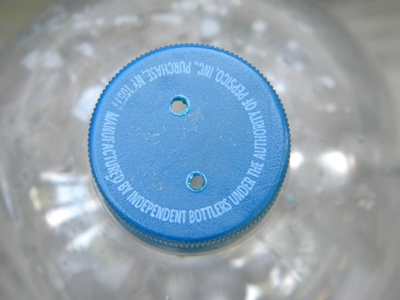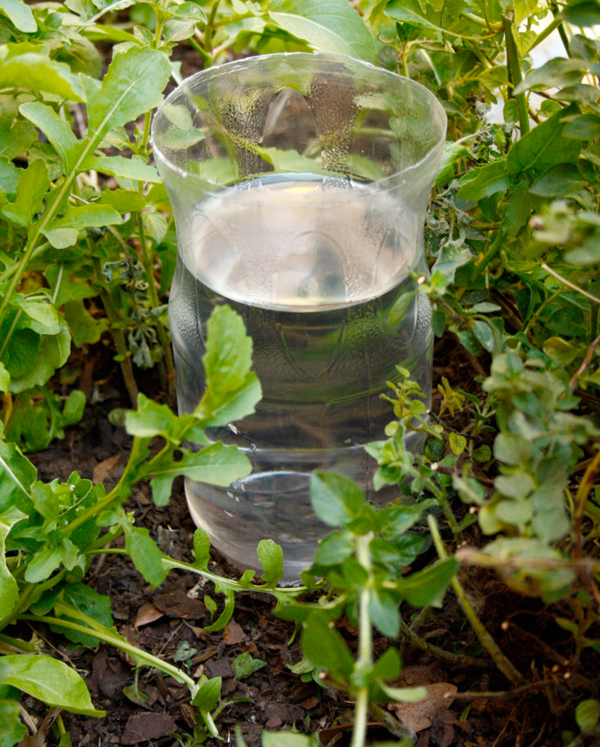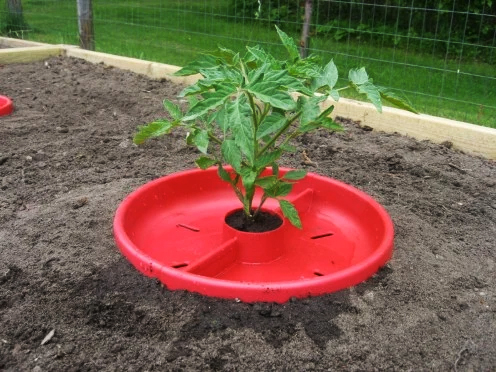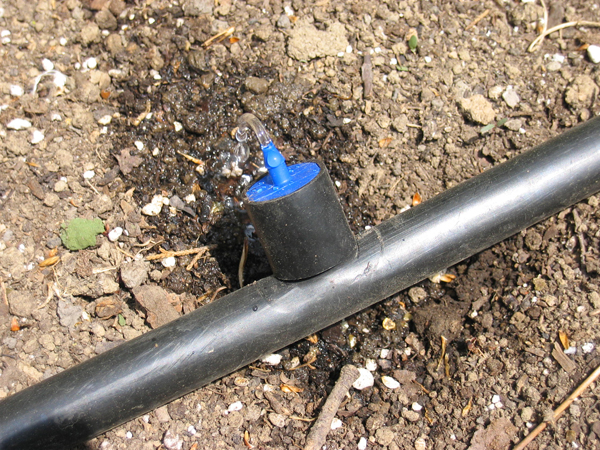
Chapter 17
Watering Your Tomatoes
Tomatoes need water. No water, no tomatoes. How much water your plants will need is related to your soil type. The presence of moderate amounts of clay or organic matter in the soil will reduce watering needs. Sandy soil increases water requirements. Recommendations for watering range from 3 gallons per plant per week to 2 gallons per plant per day – more if it is hot and dry and none if it rains. These amounts may be inadequate or excessive depending on your soil type and the size of your plants. Some growers suggest allowing your plants to wilt before watering, but this does not work when trying to grow giant tomatoes. Gordon Graham decided when to water his tomatoes by simply sticking his finger into the soil. Again, your water requirements will depend a lot on your soil and how well it drains.
There are many ways to water. Minnie Zaccaria uses a watering can in order to reduce the amount of water getting on the leaves. Another method is the use of a bottle system to apply water directly to the base of your plant. Take a large plastic bottle, cut off the bottom of the bottle, remove the cap and insert the cap end into the ground at the base of the plant. Pour water into the open bottle and allow it to slowly drain into the soil.
One grower inserts perforated plastic pipe into the ground at the time of planting and later uses the pipes for watering. He rotates the application of water as a drench to the base of the plants with watering through the pipes. Others prefer a drip watering system. This saves time and is especially convenient if you have a large number of plants or are unavailable to water each day. However you choose to water, the secret is to keep the soil moist but not wet and to water deeply.

When watering, avoid getting water on the leaves as this will predispose them to fungal infections, a common problem during moist growing seasons and late in the season. Avoid the use of a hose. Use a layer of mulch to prevent evaporation. (See Chapter 11 on mulch.) A water wand, a probe that is stuck into the soil to give an indication of its water content, is helpful in identifying the status of your soil and could be a substitute for your fingers.
The secret to watering is maintaining the moisture content of the soil at a stable level, thereby avoiding fluctuations in water availability to the plant. Water deeply and keep the soil moist but not wet.
Transpiration and Plant Circulation
Transpiration is defined as the passage of water through a plant from the roots by way of the plant's vascular system to the atmosphere via the leaves. It is the process by which water moves through plants from the roots, where it is sucked in, to the leaves where it changes to vapor and is released to the atmosphere. Transpiration also brings about the flow of mineral nutrients dissolved in the water from the roots of the plant to the foliage and fruit. Plants need a consistent flow of water to cool themselves, to supply nutrients to the leaves for photosynthesis and to move sugars from the leaves to other areas of the plant for breakdown into plant energy which results in growth.
Transpiration rates vary depending on weather conditions, such as temperature, humidity, sunlight, precipitation, soil type and saturation, and wind. Transpiration rates increase as the air temperature goes higher. As the relative humidity of the air surrounding the plant rises the transpiration rate falls. It is easier for water to evaporate into dryer air than into more saturated air. Increased movement of the air around a plant (wind blowing) will result in a higher transpiration rate. When moisture is lacking in the soil plants will transpire at lower rates. Water available to the plants depends on the type of soil, amount of precipitation and the grower's watering habits.
The process of transpiration begins in stomata (openings mostly on the underside of the leaves). When the stomata open to allow carbon dioxide and oxygen to enter into the cells of the plant (part of the respiratory process which will be discussed later), water vapor is released and evaporates into the atmosphere.
The effect of this water loss on the plant is the creation of tension between the low water density in the leaves and the force of gravity on the water in the ground surrounding the plant's root system. At the same time forces of cohesion exist between water molecules. As water moves upward to replace the evaporated water, it pulls ground water upward through the plant, from the roots to the leaves, providing the plant with fresh water throughout its structure.
In addition to moving water through the plant, transpiration also enables the movement of important nutrients, dissolved in the water, from the soil around the roots to the rest of the plant. Plants absorb water-soluble nutrients through their roots. The nutrient-rich water moves up the plant stem and into the leaves and the rest of the plant where the nutrients are then utilized. The excess water then exits through the stomata cells of the leaves. This is the plant's way of disposing of the water used to carry the nutrients but not needed by the plant for the process of photosynthesis.
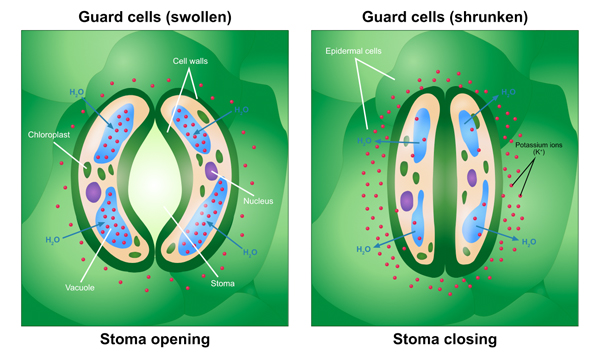
Plants can limit the amount of water vapor they lose by closing their stomata. Many plants do so at night, when they are no longer performing photosynthesis. The stomata also close if the plant is unable to take in the required amount of water through its roots. If the stomata close to prevent water loss, CO2 and oxygen are unable to enter the plant and so ultimately photosynthesis and respiration and hereby plant growth are negatively impacted. This is a good reason not to allow your tomato plants to become dry and wilt.
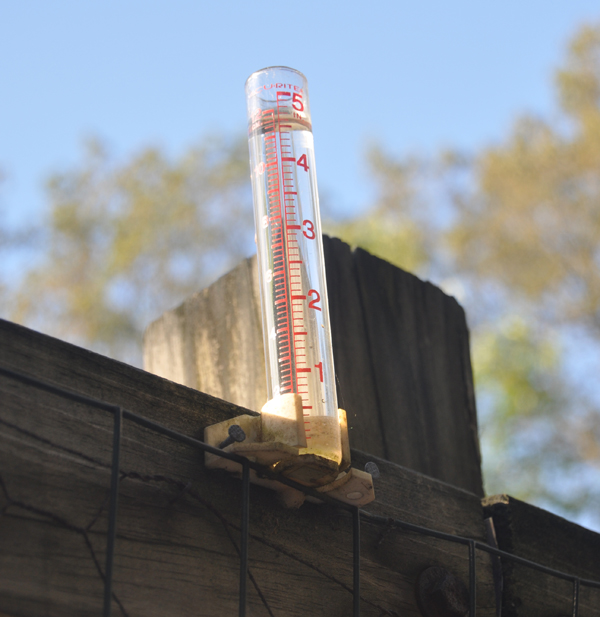
A Plant's Transport System, the Xylem and Phloem
Water and nutrients have to be able to move around within your plant. This is accomplished via the xylem and phlegm, both transport vessels. Combined they make up the vascular system of a plant. They transport water, sugars, minerals and organic substances around a plant.
The xylem mostly transports water plus water soluble minerals from the roots to the stems and leaves through a process called transpiration. The xylem is responsible for keeping a plant hydrated. Sap travels upwards through the xylem from the roots to the uppermost leaves and has to overcome gravitational forces to deliver water to a plant's upper parts.
The phloem is responsible for transporting food produced by photosynthesis from the leaves, where this occurs, to other parts of a plant such as roots and stems, the storage organs, and growing parts of the plant The phloem carries sugars, organic compounds, and minerals around a plant and works its way from leaves down to the roots with the help of gravity.
The phloem and xylem are closely associated and are usually found right next to one another. One xylem and one phloem form a 'vascular bundle' and most plants have multiple vascular bundles running the length of their leaves, stems, and roots.
What is Respiration?
Respiration is a process by which plants convert the sugars created through photosynthesis back into energy to be used for growth and other metabolic processes of the plant. The chemical equation for respiration shows that the sugars are combined with oxygen and then release energy, carbon dioxide, and water. (Notice that the equation for respiration is the opposite of that for photosynthesis.) Plants take up oxygen through the stomata in their leaves and also through their roots. It is very important to understand that plants need oxygen for respiration. This is why overly wet soils with reduced oxygen content are detrimental to root and plant growth and function.
Grower Comments on Watering

"When tomatoes were first discovered in South America, they were a vine creeping along the ground in water – that should tell you something. They were fuzzy and tiny, and not the least bit tasty – and were thought to be poisonous. So, tomatoes need lots of water to grow big. The only important thing is that you have to have good drainage and it has to be an even supply. I have it down to 3 gallons per plant, per week. The heavier watering should be done when there is fruit. You don't want to water heavy during fruit set. Just normal. Watering is very tricky. Every year is different. I still have lots of problems with it." Minnie Z.
"My watering technique is rather primitive in that I just stick a hose at the base of the plant and water deep about every two to three days – at least a gallon each time. If we've had a good rain recently, I don't water. Sometimes, I water the foliage if it looks dry and it's early in the day. I don't water late in the evening. I never let my plants wilt. I usually water early in the morning, or around 4 to 5 pm. As long as I water regularly, the size of the plant isn't affected negatively. Foliar feedings have more of an effect on size and health, but watering is very important as well. I've never used a drip system but I am experimenting this year with other watering, planting, and pruning techniques." Don C.

"I strictly water underground, and spray my plants once a week (if I've had no rain) to clean them from all the foliar spraying I do. I dig a trench 12" under where I will plant my tomatoes making sure the trench is completely level. I lay a 4" drainage pipe, leaving both ends of the pipe up out of the ground to put water in from both sides. The goal of this is to draw the roots down and actually wrap around the pipe. On hot days, your plant will not be stressed as much as a plant with shallow roots – the result of above ground watering." Paul H.
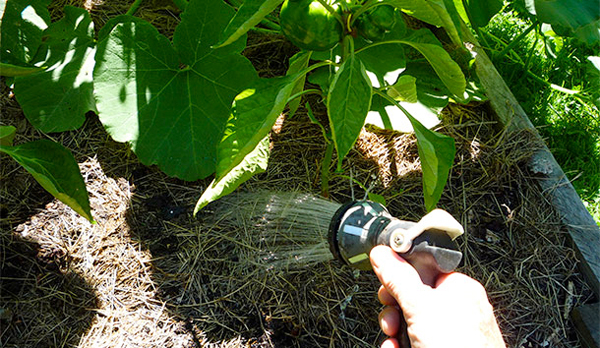
"I hand water at the base of the plant with a garden hose and shower wand in an area about 3 foot in diameter. For my slow drip system, I use Aqua Cones with 2 liter bottles or homemade gravity feed containers with adjustable emitters. I have no set amount of daily water as it depends on rain and temperature. I water more later in the season. I try to keep the soil moist and do not let the plants wilt. I mostly water in the evening, and try not to get the leaves wet. When in doubt, I check soil with a moisture meter. Other than drip watering, I water deeply." Ron K.

"I water every third day at a rate of 50 gallons for 20 to 25 plants. This works out to about 3/4 of a gallon per day. This rate is usually applied at the peak of the season during hot dry weather. The water is applied from a 50 gallon drum through a drip irrigation system, usually late in the day after the water has had a chance to warm-up. No water is allowed to get on the plants. It is important not to allow the plants to wilt, so I use a soil moisture probe frequently to make sure the moisture level is maintained. At the end of the past season I discovered that some of the roots had grown out more than 5' from the plant, so next year the drip hoses will be extended out further and the ground will be mulched to protect these roots." Chris L.
"I use a drip hose system mainly for ease. It runs the length of each row and each row is on its own timer. The timer turns the first drip hose on at around 4:30 am. I vary how long I water with the timer by the time of the season, the size of the plant, and the stage of the fruit set. It is based on observation. I never let my plants get stressed for water. Most likely, I water too much. On a really hot day, I water again at 5 pm. I live on the dusty side of a gravel road. Due to this, I spray my plants with a mild detergent solution when they get too dusty. I follow this with a quick rinse. I do this early in the day about every two weeks." Ron W.
A lack of water makes the tomatoes mature earlier, with fruits that are smaller than usual but tastier. Excessive water will delay the maturation of tomatoes. The fruits will be larger but watery and with less taste.
